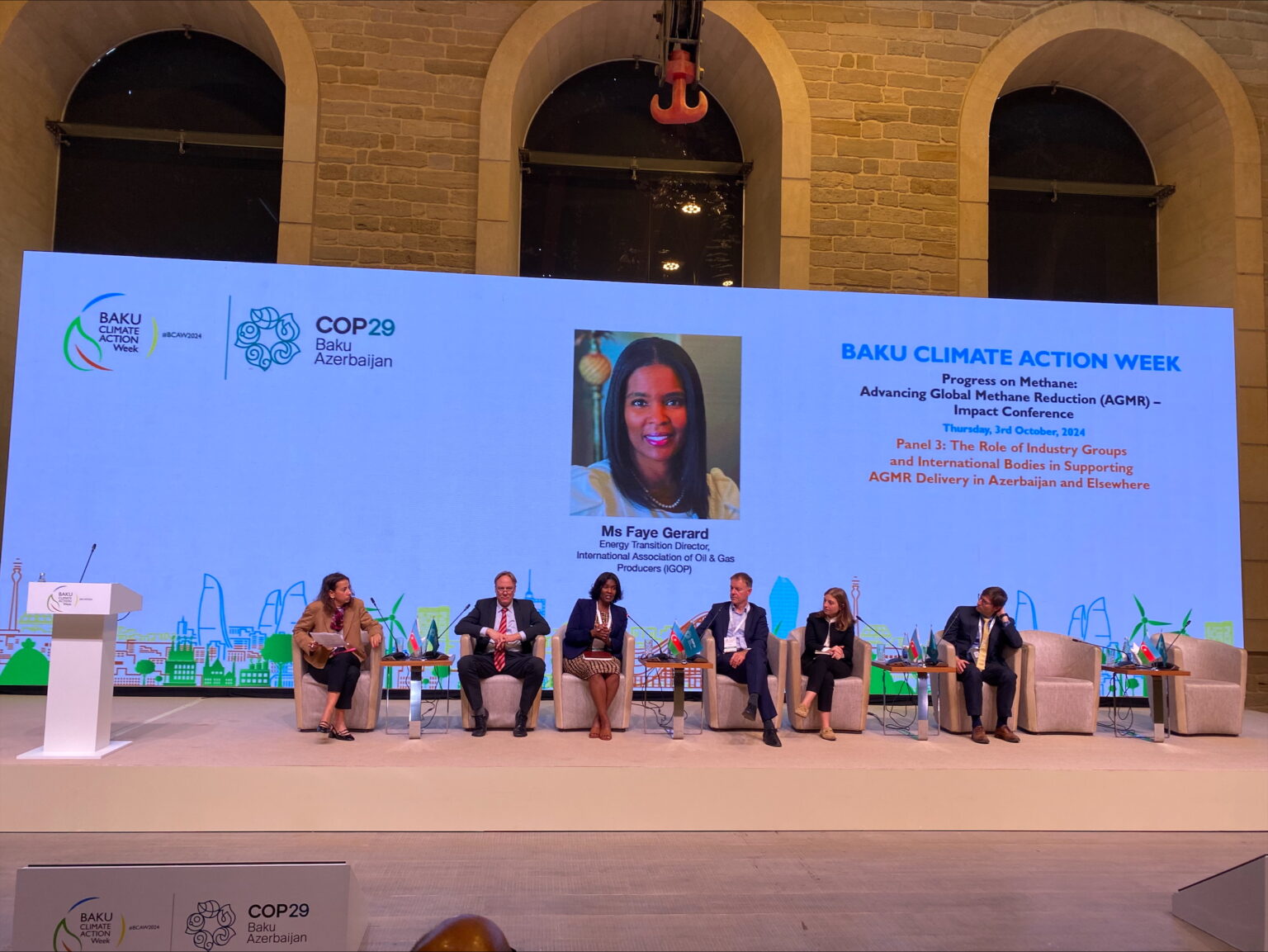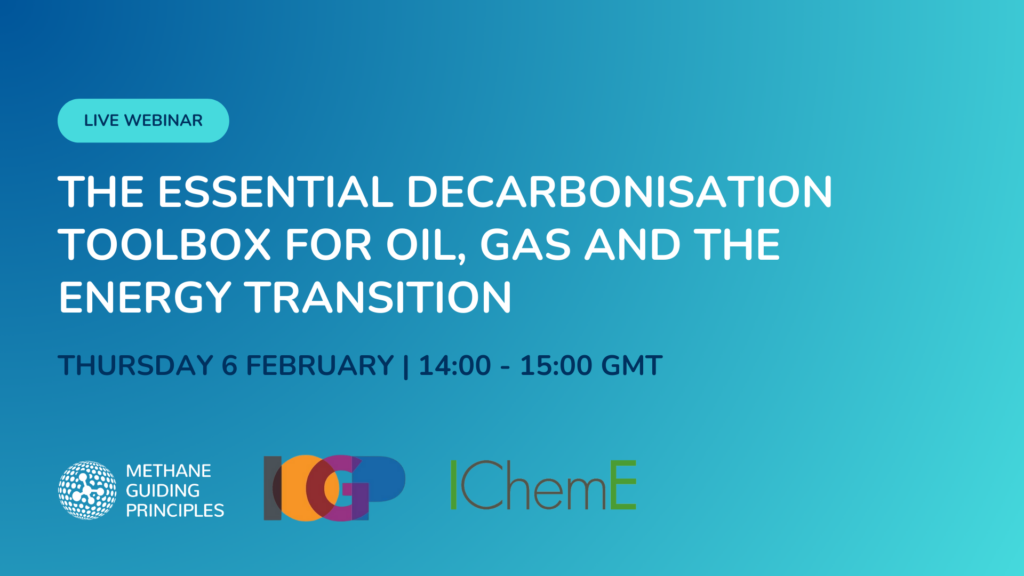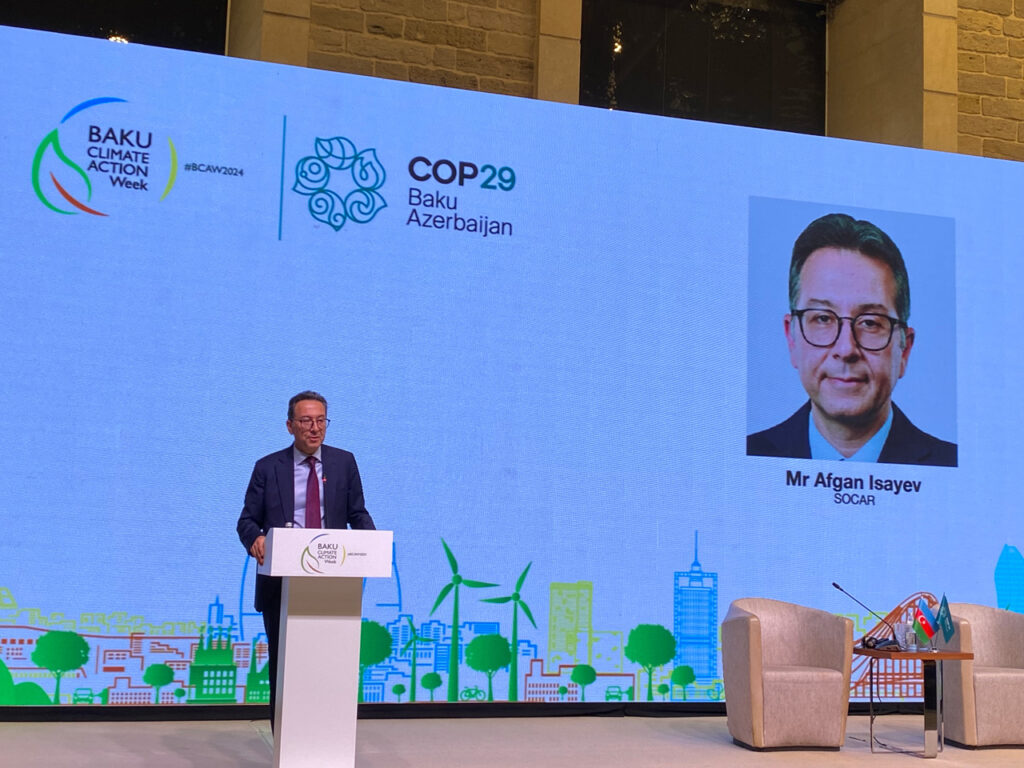Collaboration across the oil and gas value chain is the only way that deep, sustained reductions in methane emissions can occur. The effort needed to move the needle on the methane profile of entire countries is immense, but is exactly what the Global Methane Pledge (GMP) calls for: a global cut of at least 30 percent below 2020 levels by 2030. The GMP’s 158 signatory countries have a lot of work ahead of them.
Thankfully, they can learn from best-in-class practitioners of methane management. Methane Guiding Principles (MGP) members include several large oil and gas companies that employ cutting-edge tools, tactics and strategies to get a handle on their methane emissions. In essence, they sit at the frontier that every oil and gas player will need to reach in order to make the GMP a reality.
This served as the big-picture backdrop for Advancing Global Methane Reductions (AGMR) Impact Conference, which took place in Baku, Azerbaijan on October 3 as part of the inaugural Baku Climate Action Week—a precursor to COP29, which Baku will also host in mid-November. As a flagship MGP initiative connecting companies with countries to accelerate methane reductions, AGMR is poised to provide much-needed momentum toward meeting GMP goals.
Unsurprisingly, Azerbaijan took center stage at the conference, where Afgan Isayev, vice-president of SOCAR, the country’s state-owned energy company, welcomed attendees, alongside Bakhtiyar Aslanbayli, bp’s vice-president for the Caspian region. This pairing was not by coincidence: SOCAR and bp are partners under the AGMR, which saw them sign an MoU to collaborate on a number of initiatives. Their joint presence underscored the role that multi-stakeholder alliances will play in tackling methane emissions.
This thread ran through the day’s proceedings, which included four sessions touching on a range of subjects. Top takeaways from the conference include:
- Collective understanding of the “why” behind methane reductions is a crucial wellspring for future action. Although the science of methane’s impact on the global climate is well-established—it leaves the atmosphere more quickly than carbon dioxide but packs a bigger warming punch while there—not every value-chain player has a clear picture of the need to get a handle on methane emissions. Popularizing and advancing the science of methane is a key aim of AGMR’s collaborative efforts.
- Technology has made enormous strides over the last decade and continues to improve. Ten years ago, we were rolling through a digital revolution that would go on to transform the oil and gas sector and make many ink-and-paper processes obsolete. Now, technologies like drones, satellites and artificial intelligence are poised to build on the advances of the past, especially in measurement and detection of emissions. Sharing technological best practices is one of AGMR’s top ambitions and can supercharge emissions cuts in hard-to-reach places.
- Knowing where to find support is hard—but getting easier. It is worth celebrating the rapid growth in the number of support organizations that can help oil and gas producers on their methane journeys. At the same time, too many options can be overwhelming for companies further behind the curve. As part of AGMR, MGP is working with its partners to create a directory of support organizations that can streamline the process of finding help. Strong performers like bp also have extensive institutional knowledge about the support ecosystem they can share through the program.
Work progressing under partnerships like SOCAR and bp’s will continue to shine a spotlight on AGMR’s mission to reduce emissions via cooperation and collaboration. As the AGMR Impact Conference demonstrated—and as COP29 will surely continue to do so—places in the developing world like Azerbaijan are on a glide path to the future of energy, and MGP is excited to help them get there.




